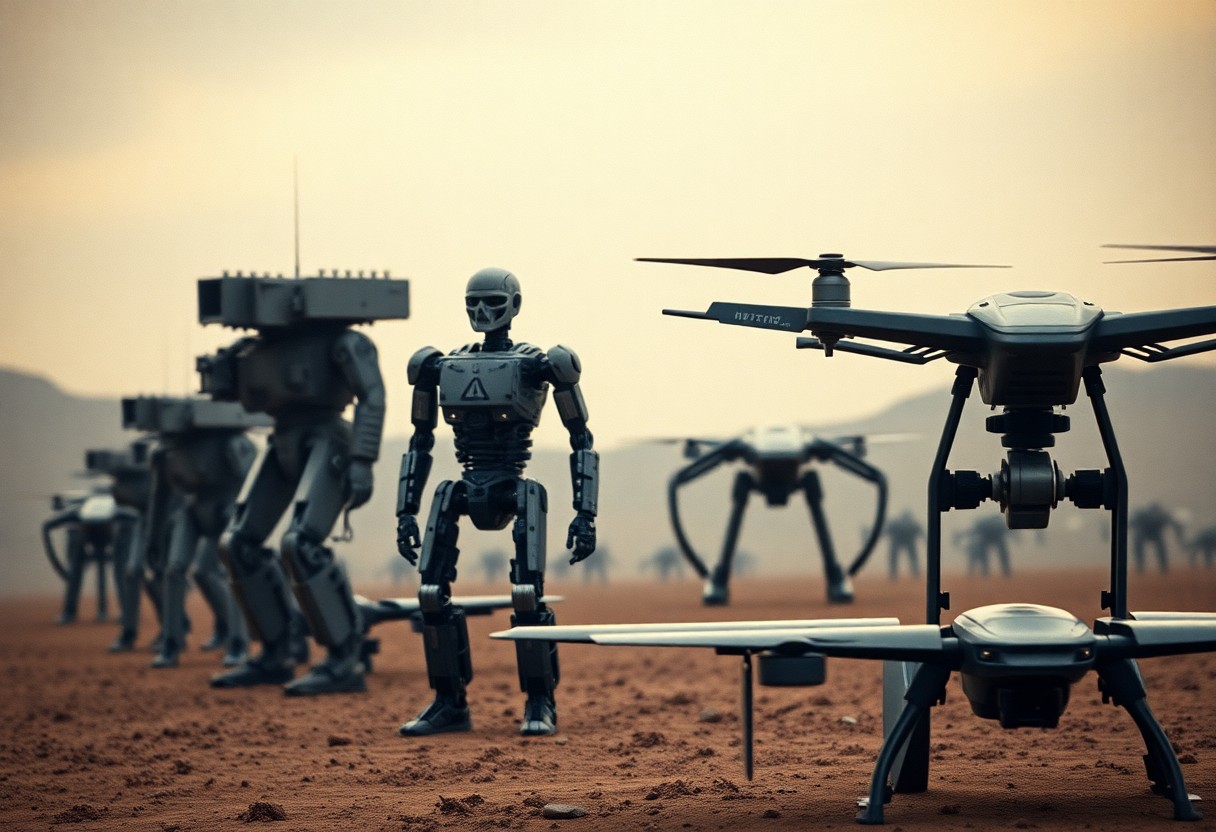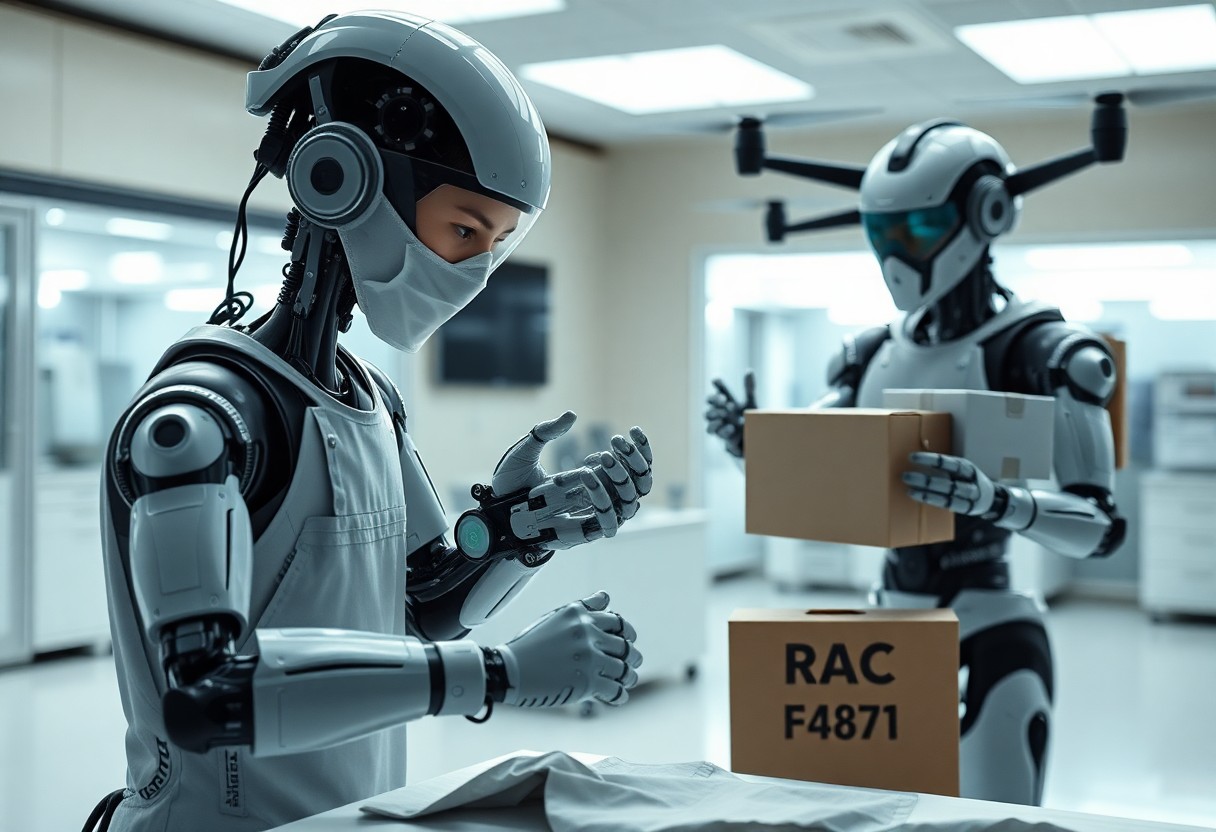Over the decades, military robots have transformed from rudimentary tools into sophisticated machines that significantly enhance combat capabilities. In this blog post, you’ll explore the historical timeline of military robotics, examining key innovations and pivotal moments that have shaped their development. You’ll also gain insight into the future prospects of these technologies, including their potential ethical implications and roles on the battlefield. Join us as we navigate the intricate journey of military robots and their impact on modern warfare.
Early Developments in Military Robotics
While the concept of robots in warfare may seem modern, their origins can be traced back to early 20th century innovations. Pioneers began exploring mechanized systems to aid military operations, leading to the development of rudimentary robotic technologies. These early efforts laid the groundwork for future advancements that would ultimately reshape the landscape of military strategy and operations.
World War I and II Innovations
Innovations during World War I and II marked pivotal moments in military robotics. Both wars saw the introduction of weaponized vehicles such as tanks and drones, proving that mechanical systems could enhance combat effectiveness. These early machines became crucial in fulfilling various roles, ranging from reconnaissance to direct engagement, revolutionizing how military forces approached warfare.
The Cold War Era
The Cold War era saw significant advancements in robotic technology as nations raced to develop more sophisticated military systems. You would witness an increase in funding for research and development, leading to innovations like unmanned aerial vehicles and automated weaponry. These advancements reflected the growing importance of technology in military strategy and intelligence gathering during this tense geopolitical period.
Due to the intense arms race during the Cold War, military robotics evolved rapidly. Nations invested heavily in research and development, leading to breakthroughs in drone technology and autonomous systems. As armies recognized the strategic advantage of reducing human casualties and increasing operational efficiency, you could see new systems being deployed for surveillance and precision strikes. This period set the stage for the advanced military robotics we see today, fundamentally changing how conflicts are managed and fought.
The Rise of Unmanned Aerial Vehicles (UAVs)
Some of the most significant developments in military technology have emerged from the rise of Unmanned Aerial Vehicles (UAVs). These devices have transformed reconnaissance, targeting, and combat operations, offering capabilities that allow for safer engagement and greater precision. As a result, UAVs have become indispensable tools in modern military arsenals, changing the face of warfare on multiple fronts.
Technological Advancements
Around the world, advancements in drone technology have led to increasingly sophisticated UAVs capable of performing a variety of tasks, including surveillance, logistics, and precision strikes. The integration of artificial intelligence and enhanced sensors has significantly improved their effectiveness and autonomy, enabling you to envision a future where UAVs are even more versatile and intelligent.
Tactical Applications in Modern Warfare
Across different theaters of war, UAVs are reshaping tactical applications by providing real-time intelligence and engagement capabilities that have become integral to military strategies. They allow you to monitor enemy movements and execute missions with minimal risk to personnel.
At the forefront of modern warfare, UAVs have proven invaluable in intelligence, surveillance, and reconnaissance (ISR) missions as well as direct strike operations. Their ability to fly for extended hours and cover vast areas allows you to gather critical data without exposing troops to danger. Moreover, the use of UAVs in drone warfare has enabled forces to conduct military operations with precision, reducing collateral damage while effectively targeting key objectives. With their continual evolution, your strategies will increasingly rely on these advanced aerial assets to gain the advantage on the battlefield.
Ground Robots in Military Operations
It is vital to acknowledge the transformative role of ground robots in military operations. These advanced machines enhance your capabilities in various domains, including logistics, combat support, and reconnaissance. By integrating robotics into operational strategies, you can significantly reduce risk to human soldiers while increasing efficiency and effectiveness on the battlefield.
Explosive Ordnance Disposal (EOD)
To ensure safety and enhance precision, military forces have increasingly incorporated ground robots for Explosive Ordnance Disposal (EOD). These unmanned systems are equipped with sensors and tools that allow you to identify and neutralize explosive threats without exposing personnel to harm, thus streamlining your approach to demolition and explosive threats.
Reconnaissance and Surveillance
The deployment of ground robots for reconnaissance and surveillance has reshaped the way military operations are conducted. These robots can gather vital intelligence, monitor enemy movements, and assess tactical environments, enabling you to make informed decisions in real-time without placing soldiers in harm’s way.
Due to their adaptability and advanced sensing technologies, ground robots excel in diverse terrains and challenging conditions. This capability allows you to deploy them in sensitive areas where human presence might provoke hostility or compromise mission integrity. With features such as live video feeds and enhanced imaging systems, these robots provide you with critical situational awareness and ensure that you stay a step ahead of potential threats.
Future Technologies in Military Robotics
All indications point to a rapid evolution in military robotics, where technological advancements promise to reshape the battlefield. Emerging innovations such as artificial intelligence, autonomous systems, and improved sensor technologies are set to enhance situational awareness and operational effectiveness. As defense forces continue to integrate these technologies, you will witness a significant transformation in how military operations are conducted, making them more efficient and adaptable to dynamic environments.
Artificial Intelligence Integration
Any military strategy must now account for the integration of artificial intelligence in robotics. By employing AI algorithms, military robots can analyze vast amounts of data in real-time, assisting you in making informed decisions quickly. This capability not only improves operational efficiency but also enhances predictive analytics, ensuring that you can anticipate and react to potential threats with greater accuracy.
Autonomous Systems and Their Implications
About the future of military operations, autonomous systems will play a pivotal role in changing the dynamics of warfare. These systems can operate independently, performing tasks ranging from reconnaissance to engagement without human intervention. While this promises increased efficiency, it also raises ethical questions and concerns about accountability in combat scenarios.
Their capacity to conduct missions without human oversight brings both opportunities and challenges. For you, this means an increased reliance on technology to perform critical tasks, yet it also necessitates a careful examination of the ethical implications. As autonomous systems become more autonomous, understanding their decision-making processes and ensuring accountability will be imperative to maintain ethical standards in military operations.
Ethical Considerations in Military Robotics
Unlike traditional warfare, the integration of military robots into combat raises profound ethical dilemmas. You must consider how these machines may redefine combat roles, affect soldier accountability, and challenge long-held moral principles. The automation of decision-making in life-and-death scenarios forces you to confront questions about the value of human judgment and the potential for dehumanizing conflict.
The Debate on Autonomous Warfare
Autonomous military systems have sparked significant debate surrounding their potential to make life-and-death decisions without human intervention. You might find arguments both for and against such technologies, questioning their effectiveness in minimizing casualties versus the moral implications of removing human control from warfare. The possibility of machines executing orders independently stirs concerns over accountability and the ethical ramifications of their actions.
Legal and Humanitarian Issues
One of the pressing challenges in military robotics pertains to legal and humanitarian issues. You may be aware that international laws regarding armed conflict are not fully equipped to address the complexities introduced by robotic warfare. The delegation of lethal authority to machines raises questions about adherence to laws of war, proportionality, and the protection of civilian lives. Your understanding of these issues is vital as the legal landscape struggles to keep pace with technology.
This gap in legal frameworks means that you may encounter ambiguity surrounding the responsibility for actions taken by autonomous systems. For instance, if a robotic unit inadvertently causes civilian casualties, determining liability can pose significant challenges. Moreover, the usage of robots may impact humanitarian operations, as their presence could either enhance protection or exacerbate conflict. By exploring these complex intersections, you can engage in a more informed dialogue on the ethical implications and responsibilities of deploying such technology in warfare.
Global Perspectives on Military Robotics
Once again, military robotics stands at the intersection of global innovation and geopolitical strategy. As nations invest in advanced technologies, the landscape of military applications is rapidly shifting, with each country adopting unique approaches based on its security needs and technological capabilities. This transformation not only influences national defense but also impacts international relations and the dynamics of warfare in the modern world.
Innovations in Different Nations
Below, you will discover how various countries are at the forefront of military robotics innovation. For example, the United States emphasizes autonomous drones and AI-driven systems, while nations like China are developing swarm technologies for enhanced operational effectiveness. In contrast, European countries often prioritize ethical considerations and collaborative technologies in their military advancements. These distinctive strategies reflect each region’s values, resources, and aspirations in the global military landscape.
Cooperative vs. Competitive Developments
To navigate the evolving terrain of military robotics, you must understand the balance between cooperation and competition among nations. While countries may collaborate on specific projects aimed at advancing technology, competition drives them to push boundaries and accelerate their military capabilities. This dichotomy influences how nations develop and implement robotic systems, creating a complex but fascinating arena in global defense.
Another element to consider is the potential ramifications of this cooperative versus competitive approach. While joint ventures can yield innovative solutions and shared resources, competitive developments can foster an arms race, leading to the rapid evolution of more advanced military robots. This push-pull dynamic creates a landscape where nations must continually evaluate their strategies, often balancing advancement and ethics. As you reflect on these developments, you gain insight into how your understanding of military robotics shapes perceptions of security and peace worldwide.
Final Words
With these considerations, you can appreciate how the evolution of military robots has transformed warfare and military strategy over the years. From early automated devices to today’s sophisticated unmanned systems, the integration of robotics in military applications continues to grow. As you look toward the future, the advancements in artificial intelligence and robotics promise to shape the battlefield further, emphasizing the importance of staying informed about these developments to understand their implications for national security and global peace. Your awareness of this subject can contribute to informed discussions and decisions in our rapidly changing world.






